All aboard the 10:10 EMR Service to Sheffield
On a chilly Saturday morning in January a small group from Derby Cycling Group travelled by train to Sheffield for a guided tour of the city’s cycle infrastructure to experience the good, the bad and the ugly. Dexter and John, from Cycle Sheffield, kindly agreed to be our guides.
Cycle Hub
Our tour commenced with a visit to the Cycle Hub at the railway station. A secure bicycle parking facility that can accommodate more than 500 bikes on two-tier racks over two floors, with space for non-standard cycles and cargo bikes. Access is gained by a security fob, obtained from the train operator for a modest fee. It’s worth noting that users of Derby Station’s secure bike “cage” will find their key fob will work here too and presumably at other East Midlands Railway-managed stations with secure cycle storage.
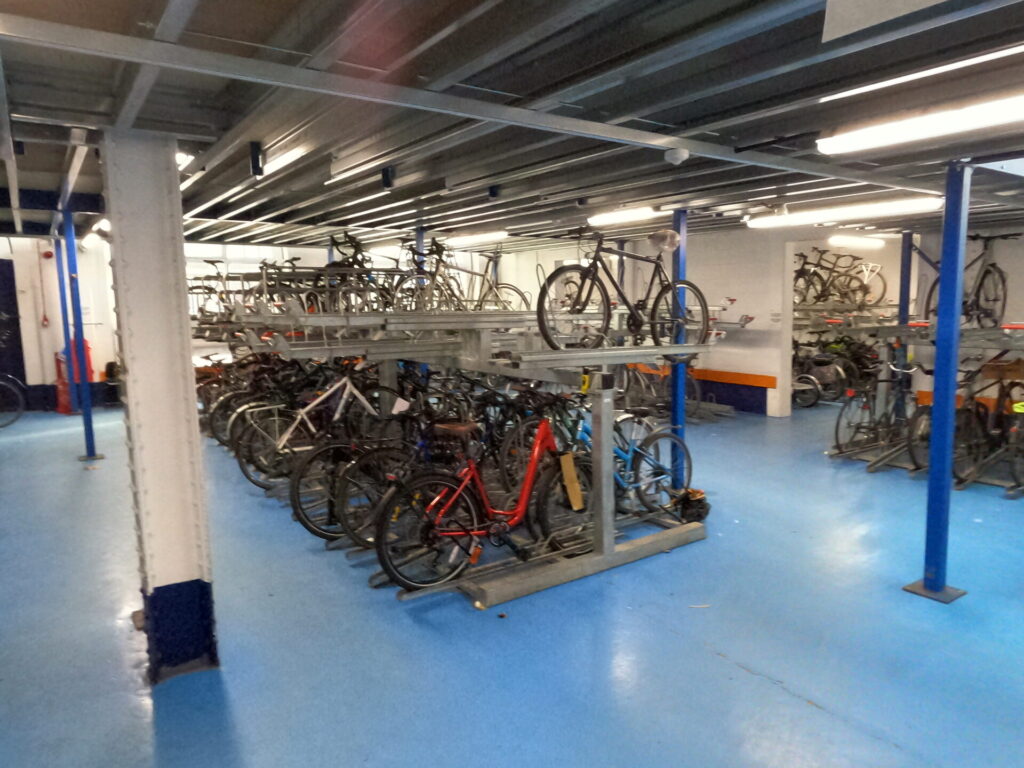
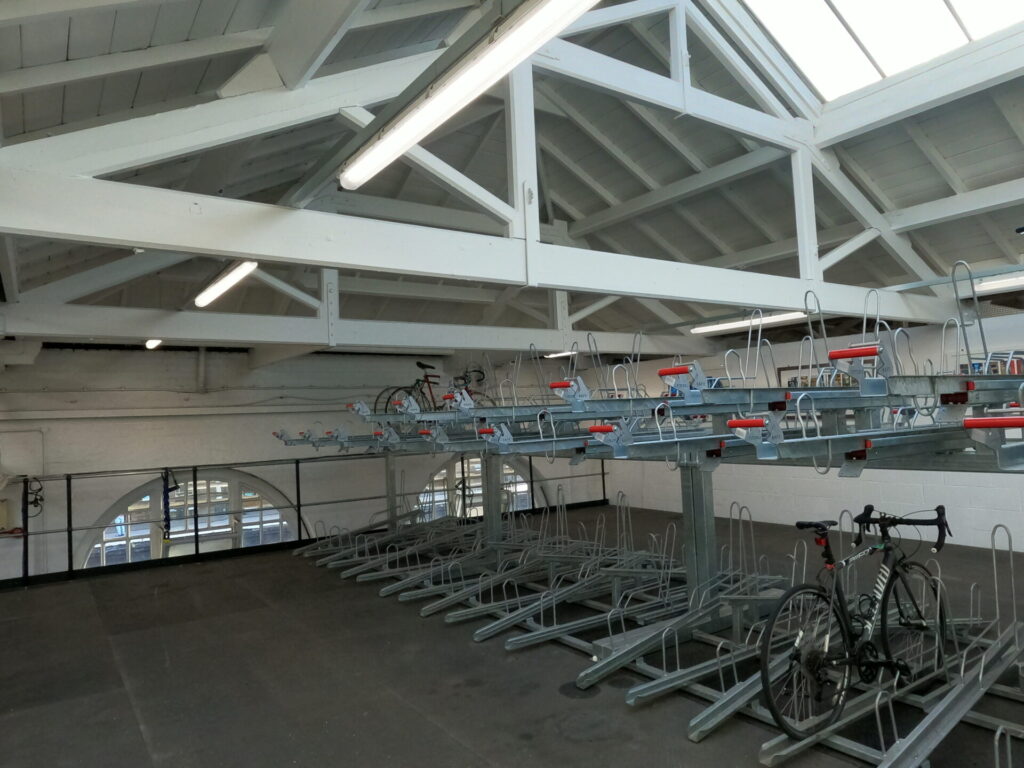
The facility also includes a repair shop, open during the week with bicycles for hire and, on the first floor, changing rooms and toilets. A clean and civilised facility which should be replicated in large stations across the country.
A bad advert for cycling
We headed away from the station, crossing the busy four-lane ring road at a toucan crossing. We joined a segregated path, marked with a red surface for cycling, but soon came to another junction with the inevitable beg button, a reoccurring theme of our tour. Unfortunately the path shrank to a single file shared-use path, still red surface, then we had to negotiate a billboard that had been installed across half of the path.
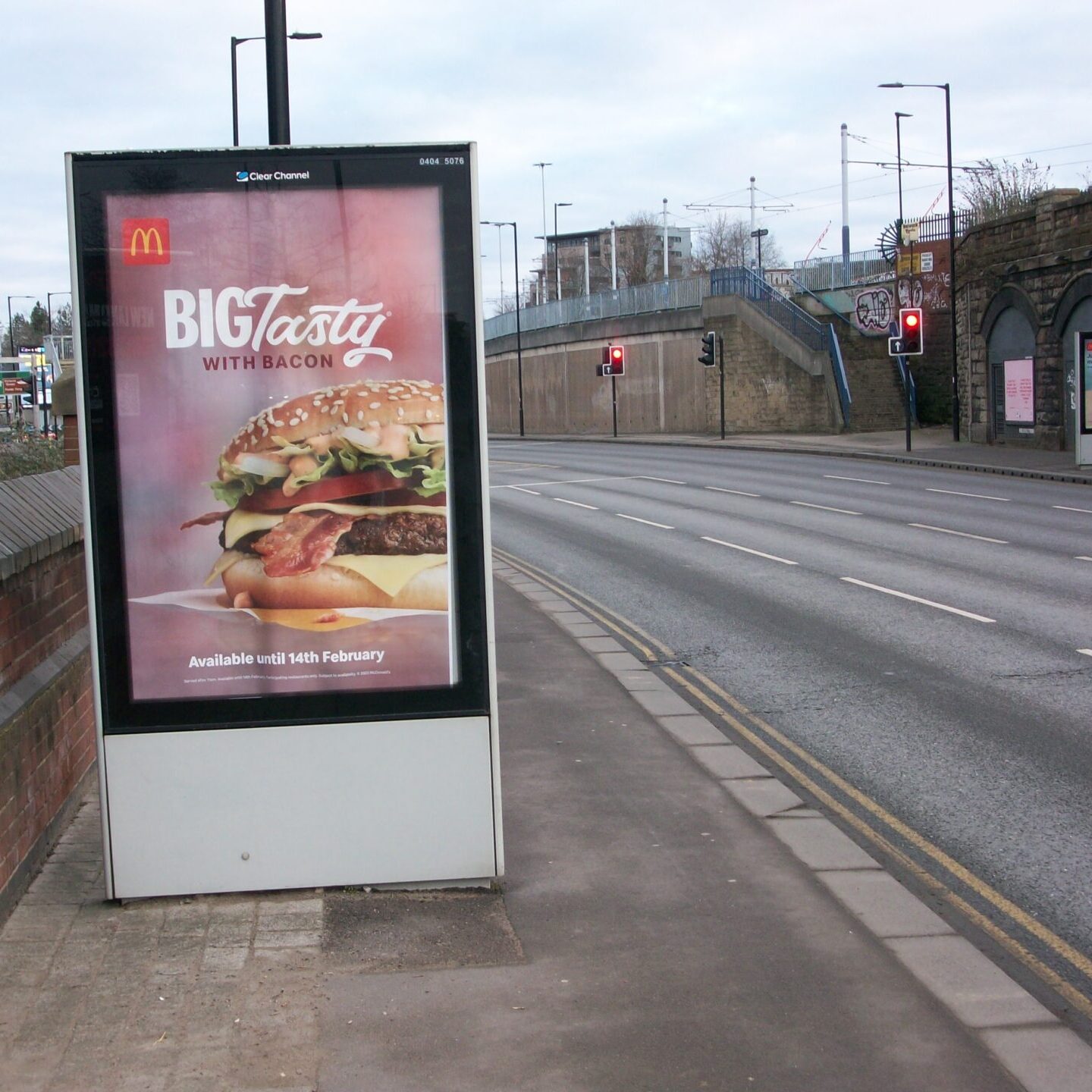
More road crossings with beg buttons and some challenging sight lines followed but the side streets were generally very quiet and easy to cross.

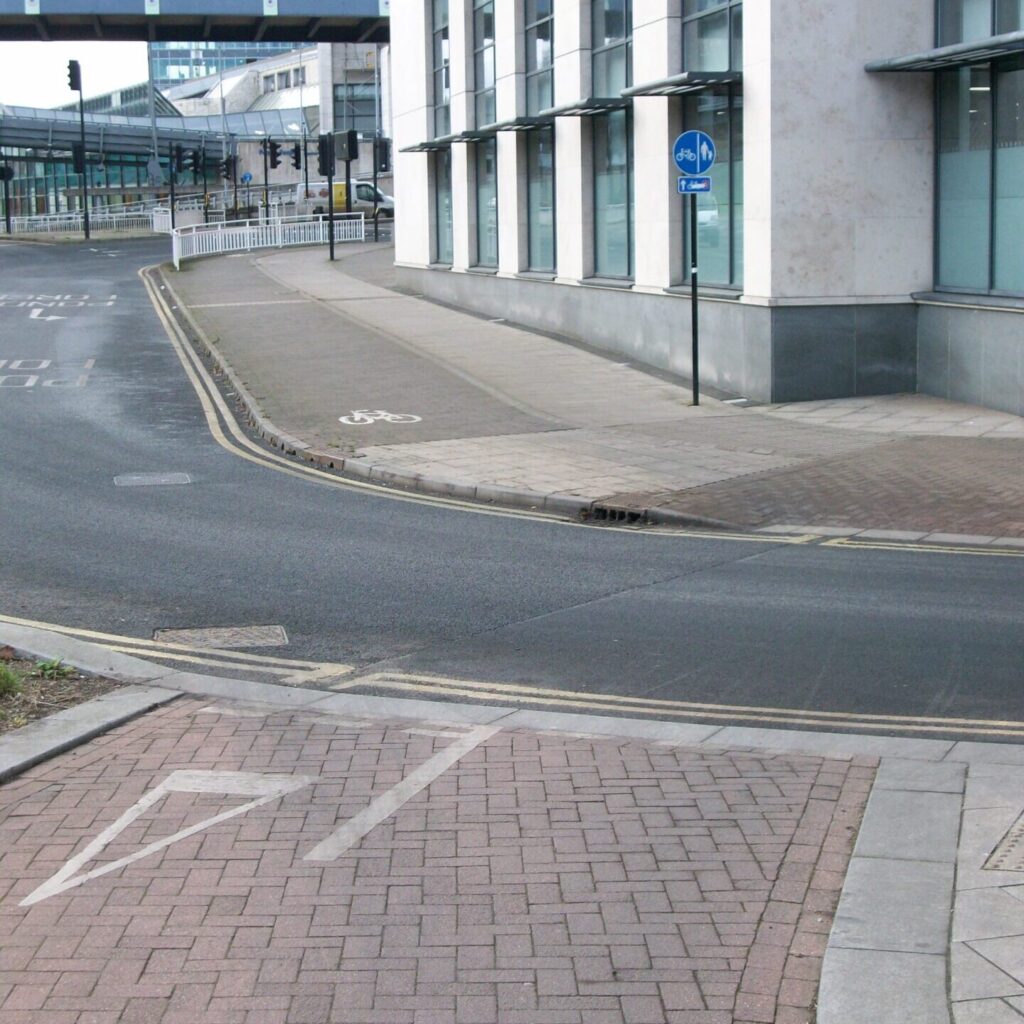
We noted some segregation from pedestrians….although it was not clear which side was allocated to whom. It was also very subtle and may not be particularly visible at night.
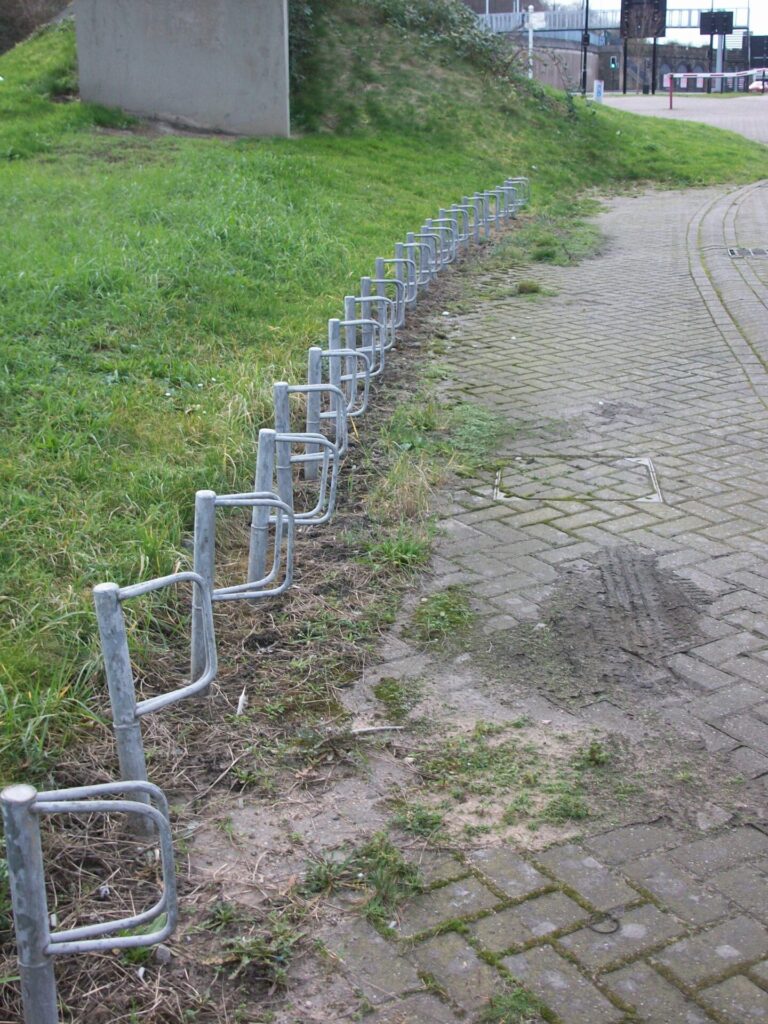

Rain Gardens at Castlegate
A new a segregated cycle path had been created from what had once been a busy road inside the inner ring road. Surrounded with generous planting in the form of rain gardens or what is referred to as SuDS (Sustainable urban Drainage System), where rain water run-off from impervious surfaces is collected to soaks away in an attempt to reduce flooding.
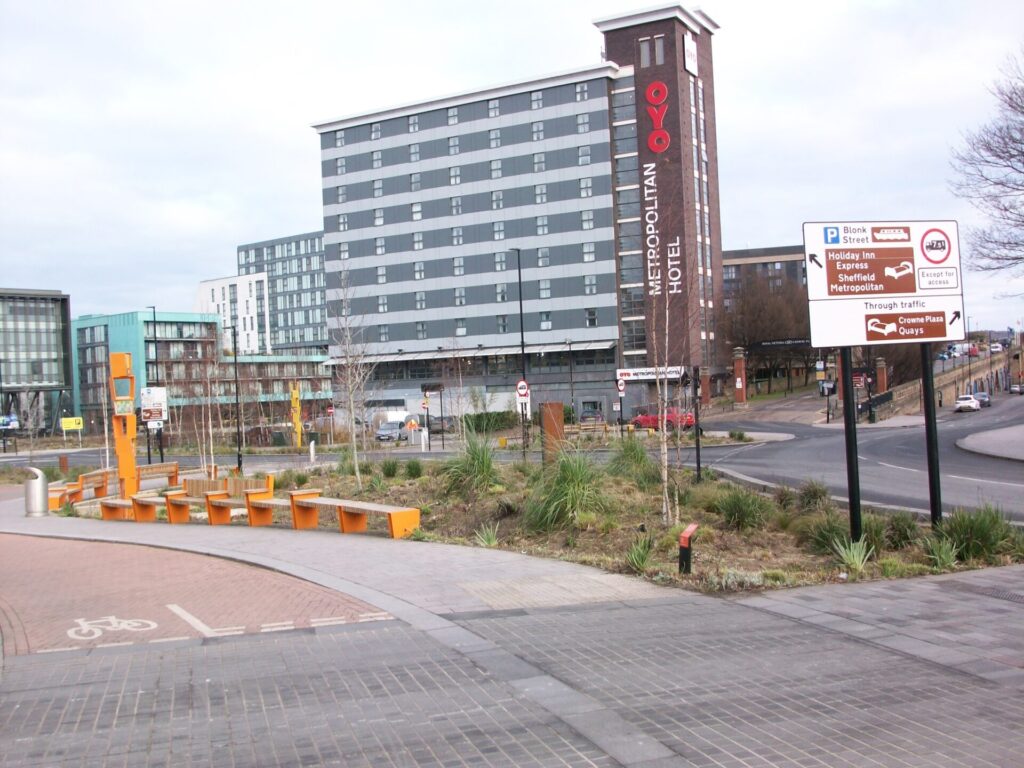
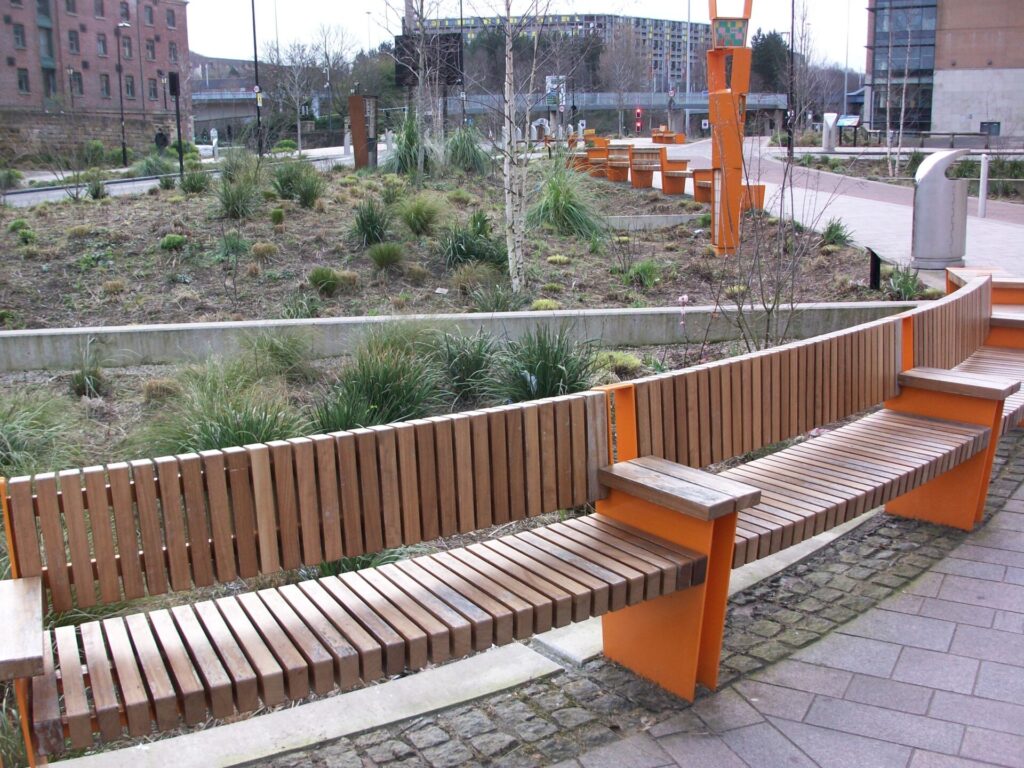
Grey to Green
Grey to Green is a series of schemes aiming to bring colour and sustainability to Sheffield city centre. It has transformed tarmacked areas into a green public space that encourage cycling and walking. Designed with climate change and wellbeing in mind it is helping to lay foundations for a healthy, sustainable future for this part of Sheffield.
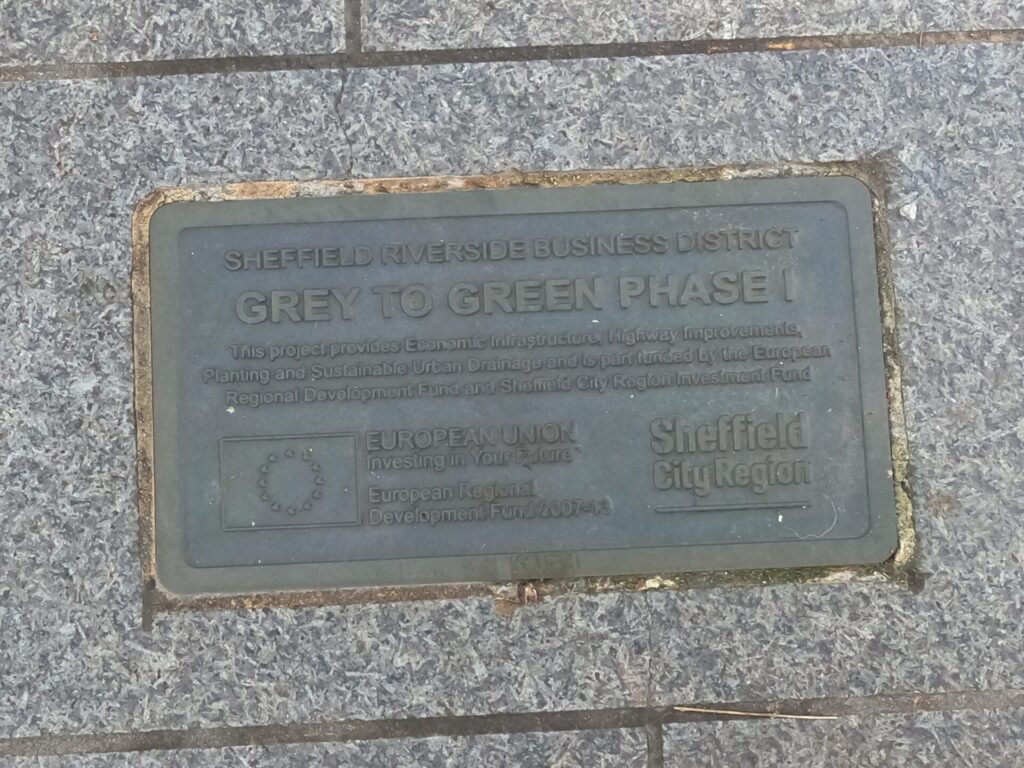
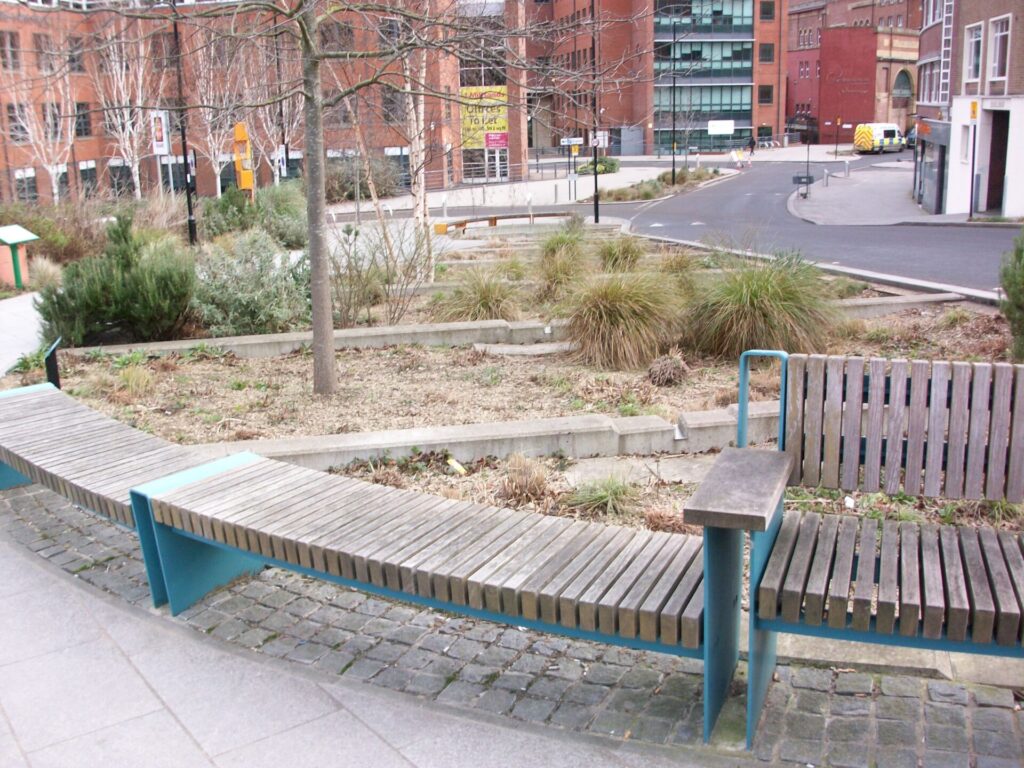
We negotiated more button-controlled junctions onto an earlier phase of the scheme where the shared path was not signed, confusing both for those walking and people on bikes.
Guided along a pleasant quiet shared path between the River Don and new apartment blocks, the brick path had a nasty little kerb separating people walking from people on bikes, a potential hazard for the unwary whether on foot or two wheels.
Cycle Traffic Lights
We emerged back up onto the northern side of the ring road where we encountered our first set of bicycle traffic lights on our trip.
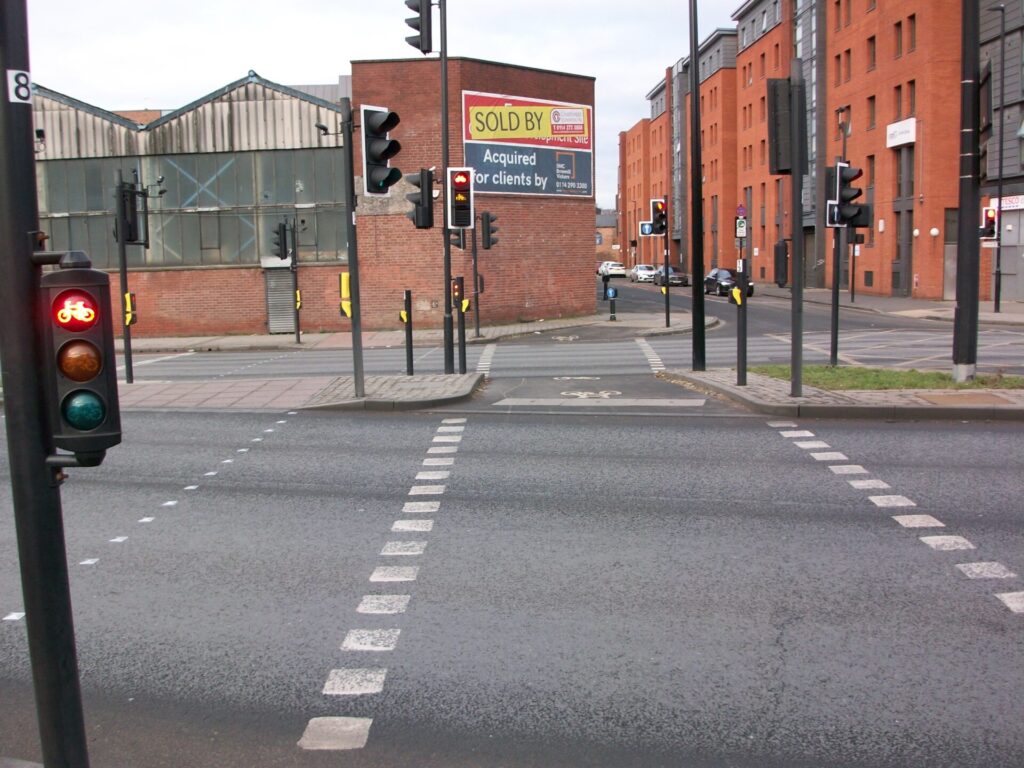
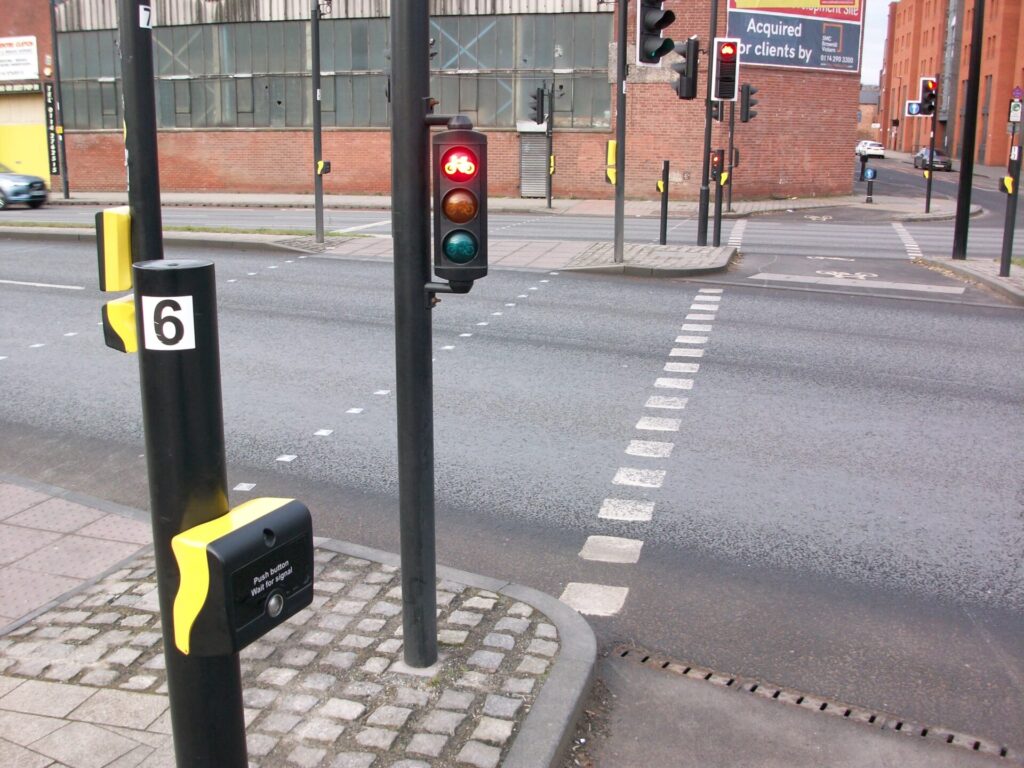
On the second lap of the loop (James and Jean are keen) it was discovered that there is no need to press the button but your presence is automatically detected by a camera sensor.
While it was novel for us Derby folk to see these lights in the wild, the lights merely mirrored the adjacent light phase for people on foot rather than providing priority for people on bikes that you might see at more complex junctions. The phasing was a little odd too as shown by the amber turning to green in the middle island and thus it took two phases to cross the road, prioritizing the flow for cars of course.
Steel City Filters
Emerging in Kelham Island, we found the industrial museum complete with Bessemer Converter proudly displayed outside, indicating the city’s steel heritage. This industrial area is currently undergoing redevelopment, old buildings being converted into apartments and infilled with blocks of modern flats, to create a very trendy inner-city residential area. Traffic calming measures had been introduced in the form of concrete blocks to prevent drivers ‘rat running’ around the local streets, trying to avoid congestion on the ring road.
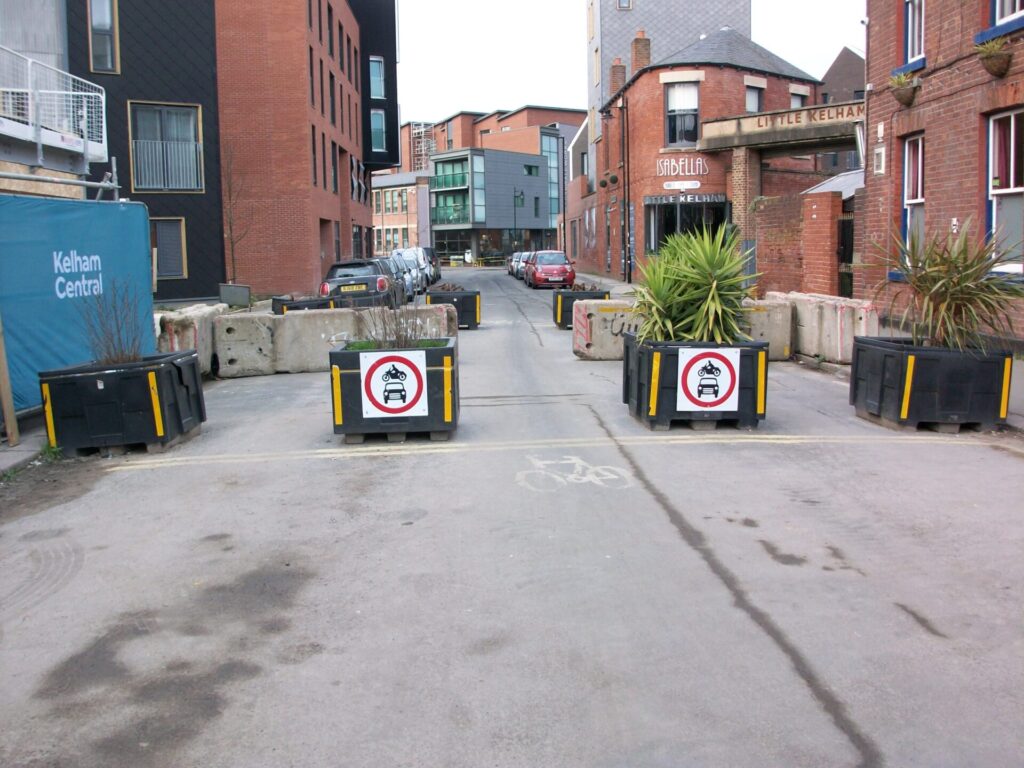
The planters originally installed had been pushed aside by drivers insistent on ‘rat running’ but now with an immovable deterrent and 20 mph speed limit these streets were quiet and pleasant to ride along, encouraging visitors to the cafes, bars and restaurants. A more attractive permanent filter solution will no doubt be implemented on completion of adjacent developments.
City of Seven Hills
Encountering more crossings we climbed the only significant hill of our tour, slowly pedalling up the interminable gradient, we emerged by the university. Between the buildings we had views of the distant countryside.
Heading out of one cluster of university buildings, we crossed the four-lane A57 via a very wide parallel crossing – no doubt it would be teeming with students on weekdays.
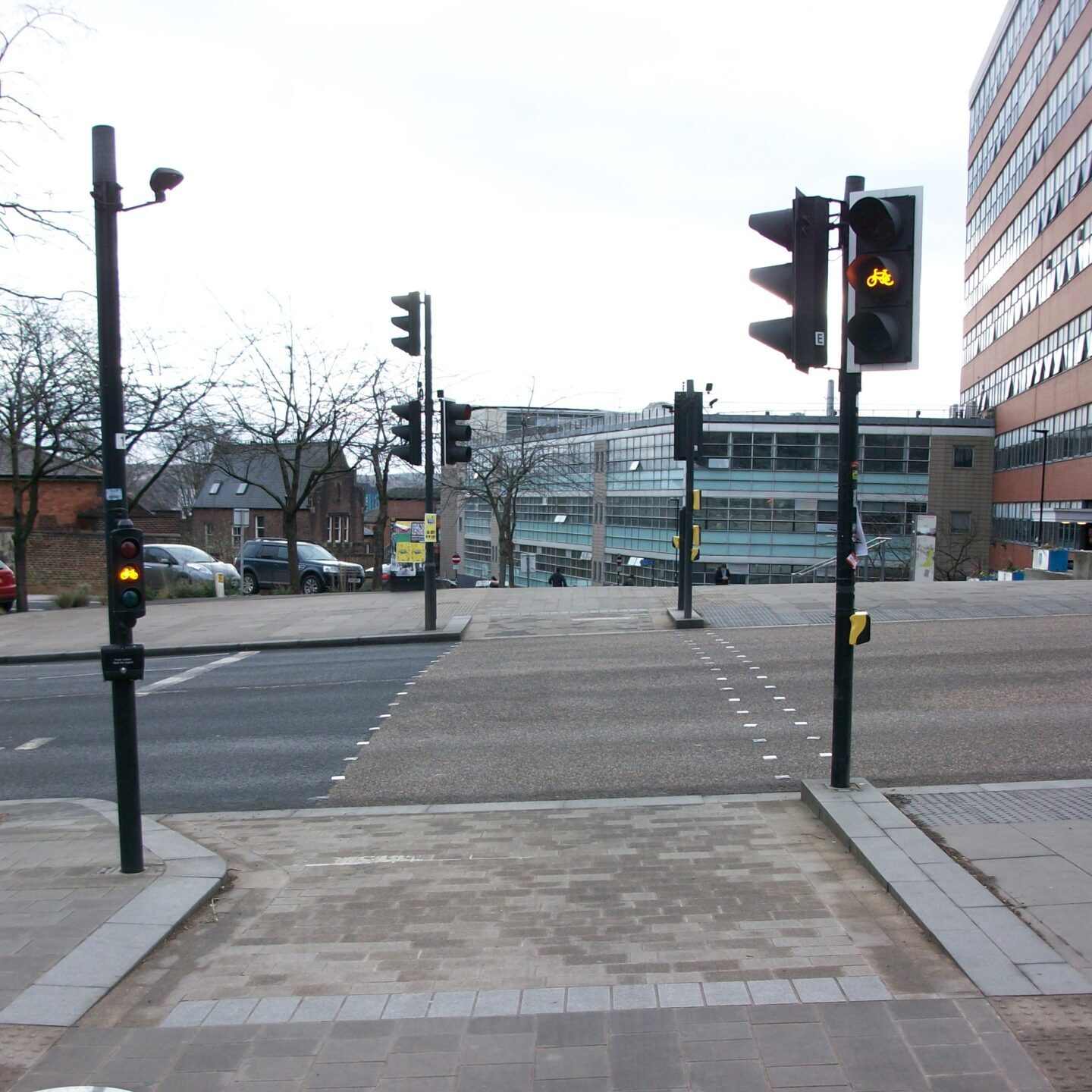
We descended into the leafy suburb of Broomhall (Or Broomhill depending on which map you look at) – a low traffic neighbourhood of Victorian terraced housing, with one-way streets and filtered permeability (Filtered, incidentally, to curb kerb crawling…but a win for people on bikes too). The area lacked any accessible bicycle parking, necessitating that any bikes would have to be taken indoors, a potential candidate for on-street bicycle hangars.
A red tarmac cycle path brought us to another light-controlled parallel crossing over the ring road again.
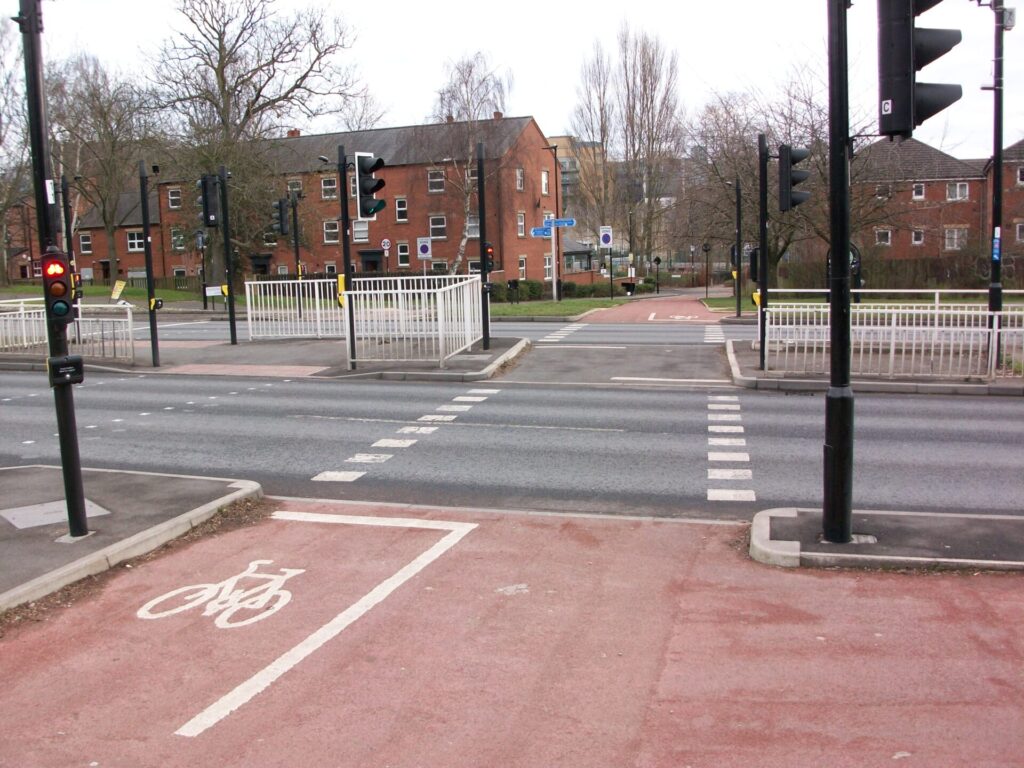
Riding along quiet filtered streets again, We emerged on a shared path besides the converted Jessop Hospital for Women, now part of the university. Again we descended towards the city centre where boarded-up shops haunted pedestrian spaces and nearby the steel skeleton of a redundant commercial premises was being brought back to life, the noisy resuscitation reverberating between buildings.
We slowly negotiated the shared paths crowded with Saturday shoppers, struggling to stay together in the crowds and fighting for space to negotiate decorative planters. The shared infrastructure failing to provide benefits for either party.
Escaping the shopping area we briefly enjoyed a segregated lane.

Our joy was short-lived as we emerged onto a bus lane, soon returning to the shared space before a pedestrian crossing. Once around the crossing we returned to the road, immediately crossing a junction on a red painted advisory cycle lane. Meanwhile speed limits changed from a comfortable 20 mph to 30 mph, then just before a 40 mph limit we re-joined a narrow shared pavement. This portion of our route had proved confusing with frequent changes, despite following someone who knew their way through the intricate web of shared, painted and segregated pieces of infrastructure.
Nearing the end of our tour, we cycled along a two-way road with advisory (albeit very wide and coloured) cycle lanes which may function well in a residential cul-de-sac in the Netherlands but not necessarily on a city centre bus route.
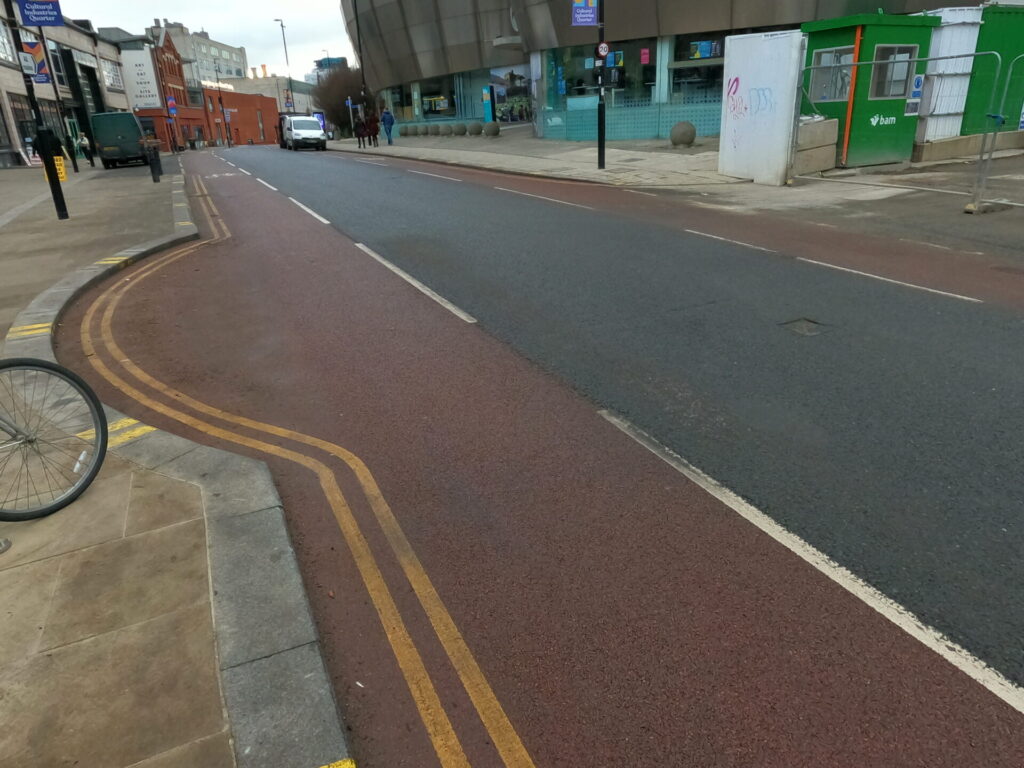
Tour de Sheffield at 60kph.
If a picture speaks a thousand words then a video must speak several million. Here’s a video of some of the highlights (and low-lights) of the cycle infrastructure seen on our tour. The video’s been sped up so it may induce nausea.
And relax….
We found refreshment at a local hostelry where we exchanged thoughts about our experiences of cycling around Sheffield, followed by a hot drink and a bit of cake in Sheffield’s equivalent of the Quad.
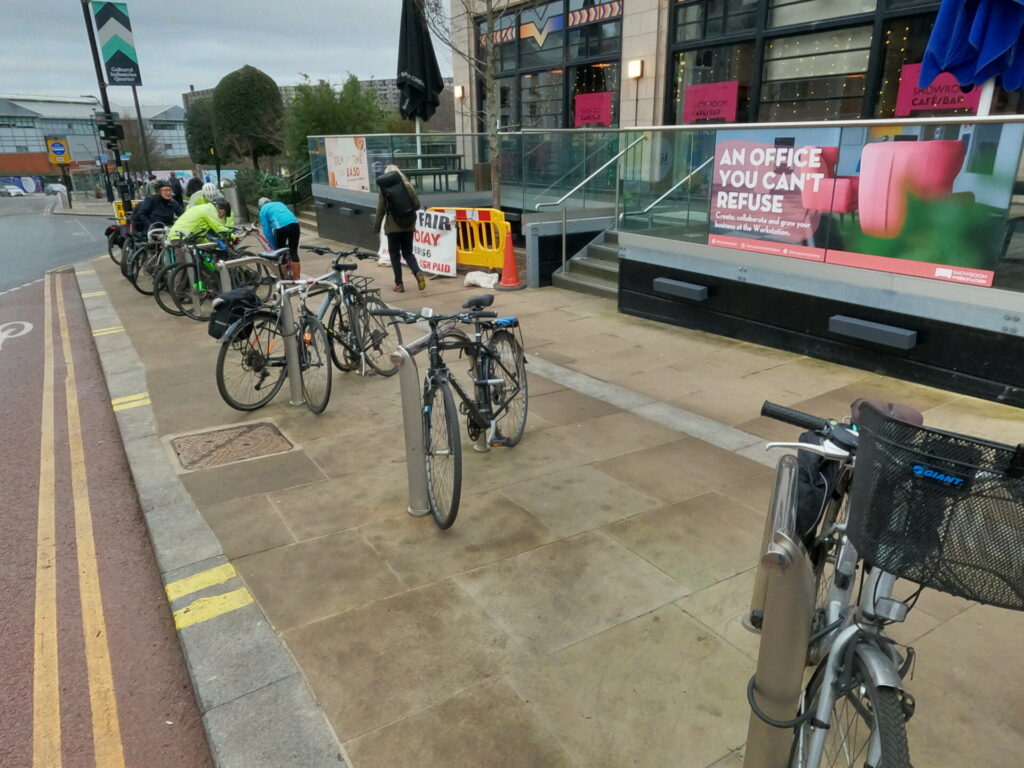
The overwhelming thought was how disjointed the arrangement is for people walking and riding bikes, having to stop and wait to cross junctions, to repeat the process a few yard along our path. The changing nature of the infrastructure became confusing; shared paths, shared paths with shopping crowds, segregated paths, on-road painted lanes, bus lanes and even just on the road. Some of the nicest streets were traffic calmed / low traffic areas, with 20 mph speed restrictions which made the areas feel very comfortable for riding a bike, encouraging people to the cafes, bars and restaurants.
Sheff’s Special
Our guides emphasised that we had experienced the good infrastructure in the city centre and that travelling outside of the ring road there was little infrastructure for cycling, with the arterial routes being quite challenging for people riding bikes. If we are to encourage more people to ride bikes there must be coherent routes that allow people to make those everyday journeys to meaningful destinations on bicycles.
We had experienced a variety of cycling infrastructure that illustrates the changing thinking about cycling provision over the years taken to implement the schemes through the city centre. It also reflected the sporadic nature of funding mechanisms from various sources, that results in a piecemeal approach to infrastructure improvements. If we want to have a choice in the way in which we travel around our urban environment then we need a long term strategy and consistent funding to allow authorities to budget and resource for the development, implementation and subsequently maintenance of that infrastructure.
Our thanks to our chair Ken for reaching out to Cycle Sheffield and putting together most of the words in this article. But also to our hosts Dexter and John for showing us the city centre of Sheffield on what is unarguably the best mode of transport available…..although jet-suits do look rather cool.

